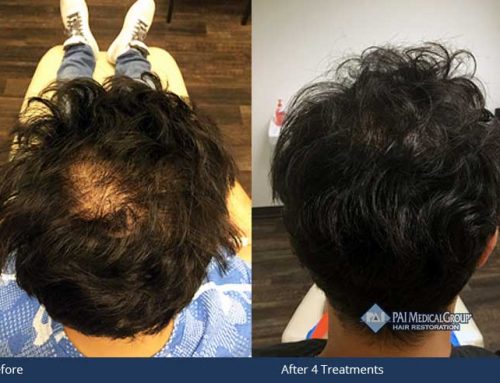Coping with Alopecia Areata
 There is no doubt that Alopecia Areata can be a confusing condition. The term “alopecia” simply is a medical designation for hair loss. Alopecia Areata refers specifically to an autoimmune disorder that causes a distinct pattern of hair loss in specific “areas,” most noticeable as presenting with small spots or areas of hair loss.
There is no doubt that Alopecia Areata can be a confusing condition. The term “alopecia” simply is a medical designation for hair loss. Alopecia Areata refers specifically to an autoimmune disorder that causes a distinct pattern of hair loss in specific “areas,” most noticeable as presenting with small spots or areas of hair loss.
An autoimmune disorder can occur when the body’s immune system mistakes healthy tissue for an outside intruder like bacteria, viruses or toxins. Then a person’s autoimmune system attacks the healthy cells by mistake in an attempt to protect the body. For men and women with Alopecia Areata, the healthy tissue being attacked is their hair follicles.
How the immune system suddenly becomes unable to differentiate between normal tissue and “foreign body” tissue is not yet known. Genetic makeup can play a role in a person’s susceptibility to having an autoimmune disease like Alopecia Areata. There are times when a single individual can suffer from multiple autoimmune disorders. Alopecia Areata is not usually accompanied by other illnesses.
Most people that are affected by Alopecia Areata are otherwise healthy. It can affect men and women and can also affect children through adulthood. In the United States, there are nearly 6.5 million people who suffer from Alopecia Areata. While this may sound like a lot, it actually only accounts for 2% of the U.S. population.
Alopecia Areata typically begins with sudden spots of baldness on the top or sides of the scalp. From that point, the prognosis and treatment can vary depending on each individual. It is possible that the hair could eventually grow back, only to fall out again. It is also possible that more bald spots may appear until it develops into total scalp baldness (Alopecia Totalis). Even rarer is Alopecia Universalis, which can cause the loss of all body hair, from head to foot.
Alopecia Areata can appear in several different ways and it can be unpredictable. As a result, treatment options are dependent upon the degree of hair loss, the pattern of the hair loss, as well as the age of the patient, and their needs and desires. There are some cases where hair growth can be stimulated through ongoing treatments.
Understanding Your Hair Restoration Options
With Alopecia Areata, as well as other forms of male and female hair loss, it is important to understand which hair restoration solutions will work for you in your particular situation. To learn more about PAI’s custom hair restoration procedures, we invite you to schedule a free, private appointment with an experienced Grow Your Hair Back™ hair restoration specialist today, who will work one-on-one with you to answer all your hair loss questions and help you make a well-informed decision about which hair restoration solution is right for you.





